
A dried up saline pond in the Lac du Bois Grassland Protected Area, 2003. The red around the edge is pickleweed, a plant that thrives in saline environments. It turns red in the fall, green in the spring.
Image Credit: SUBMITTED / Louis Gosselin
November 21, 2021 - 12:01 PM
- This story was originally published June 27, 2020.
While the Lac du Bois grasslands in Kamloops are home to many unique geographical features, there is one in particular that rarely gets the spotlight.
If you've ever driven up Batchelor Hills Drive, you may have noticed various ponds on either side of the road.
Although they may not look like anything special, these are salt water ponds unique to B.C.'s interior that will sometimes appear bright red, or disappear altogether.
Unlike freshwater ponds and lakes, the saline ponds don’t have an outflowing stream, only filling from rainfall and snowmelt. This is why the water is quite salty, whereas lakes are not.
“If a lake or a pond has an outflowing stream, you get as much salt going in as going out, so it never builds up,” ecologist Dr. Louis Gosselin said.
He explained that the salt comes from the soil, and dissolves into the water through rain or snowmelt. However, if the body of water isn’t attached to a stream, the salt accumulates.
“When it evaporates, the water dries up but the salt doesn't,” he said.
Consequently, with nowhere for the salt to go, these isolated ponds become more and more salty over time. Some ponds in the Lac du Bois grasslands are almost three times saltier than the ocean.
Gosselin has been monitoring these ponds for almost twenty years. One mystery he has yet to crack is why some of the ponds dry up, for months or years at a time, then suddenly rehydrate again.
This has been documented with the largest saline pond in the grasslands, Long Pond.
In 2003, the water levels were high. But by 2015, the pond had almost completely dried up.
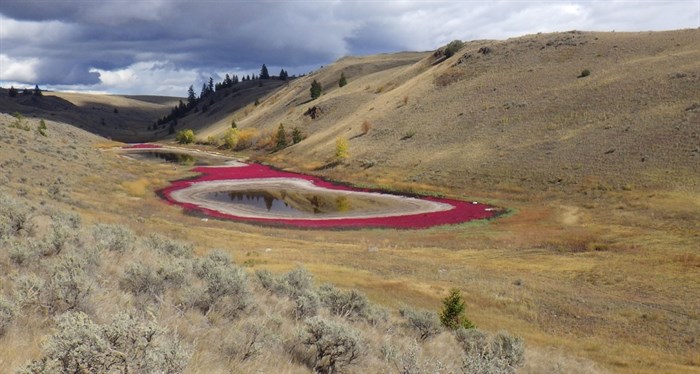
Long Pond, in Lac du Bois Grassland Protected Area, 2015. The red around the edge is pickleweed, a plant that thrives in saline environments. It turns red in the fall, green in the spring.
Image Credit: SUBMITTED / Louis Gosselin
In 2019, it had began rehydrating.
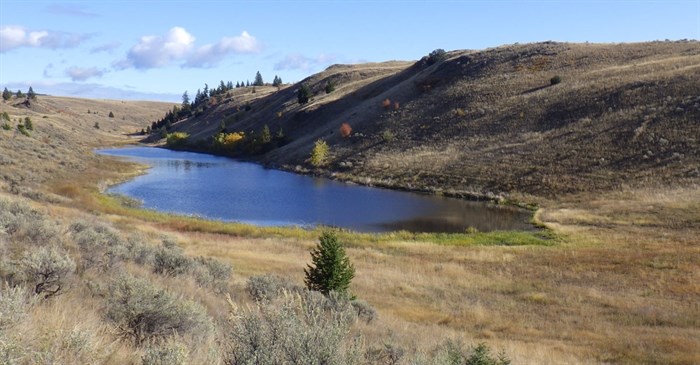
Long Pond, in Lac du Bois Grassland Protected Area, 2019.
Image Credit: SUBMITTED / Louis Gosselin
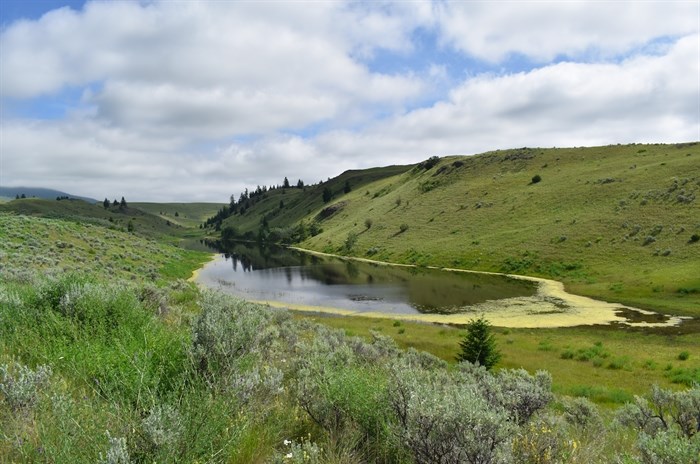
Long Pond, Lac du Bois Grassland Protected Area, 2020.
(BRIE WELTON / iNFOnews.ca)
A similar phenomenon happened in another pond nearby.
In 2016, the pond was completely dry, but filled again by 2019.
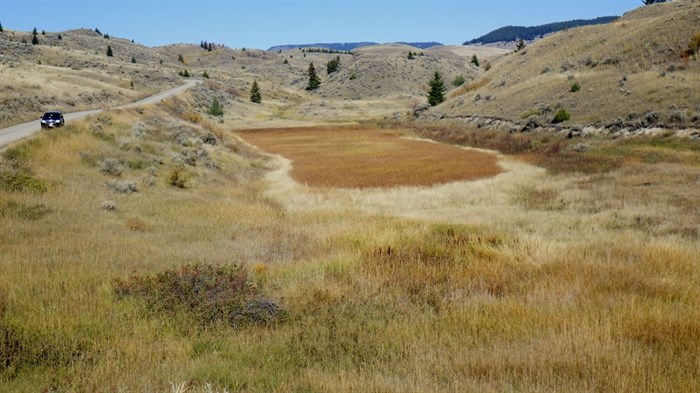
Saline pond, Lac du Bois Protected Area, 2016.
Image Credit: SUBMITTED / Louis Gosselin
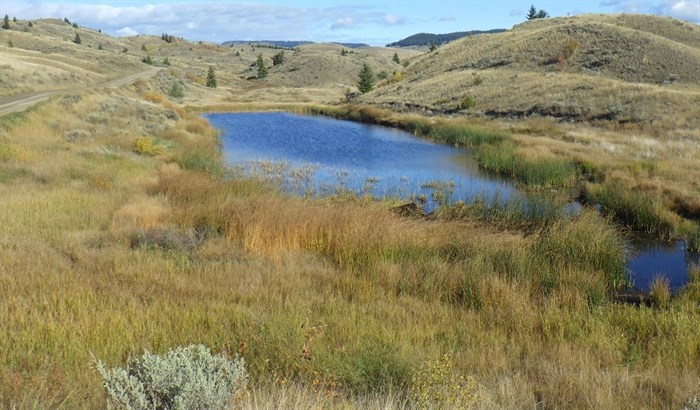
Saline pond, Lac du Bois Protected Area, 2019.
Image Credit: SUBMITTED / Louis Gosselin
“We don’t really know why, but in the last three years, the water levels have come back up,” Gosselin said.
Although high rainwater and snowmelt may seem like an obvious explanation for this phenomenon, the mystery prevailed when Batchelor Pond went through a completely different transformation in the same area, within the same period of time.
“There was always water there. Then starting around 2005, 2006 it started shrinking, shrinking and by around 2007, disappeared,” he said.
“And that’s it. I have not figured out why there is no water in there, with everything else rehydrating.”
While 85% of the ponds Gosselin monitors in the area are full, Batchelor Pond remains empty to this day.
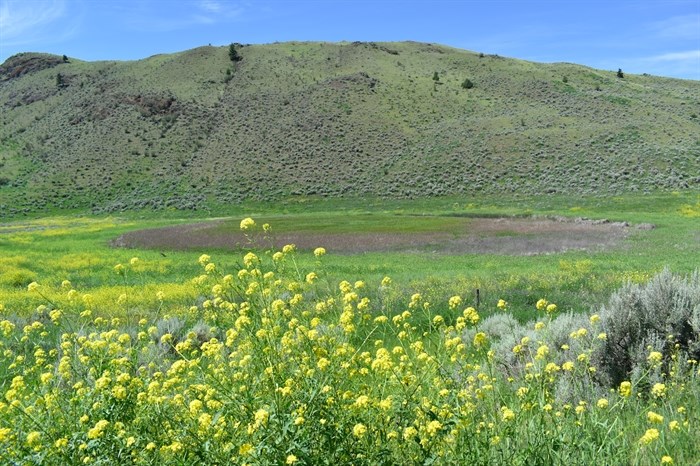
Batchelor Pond, Lac du Bois Grassland Protected Area, 2020.
(BRIE WELTON / iNFOnews.ca)
Although the saline ponds are still a bit of a mystery to researchers, their importance in the ecosystem is undeniable.
Many ducks, birds and small mammals rely on the ponds for habitat and food. Amphibians need the ponds too, especially the at-risk Great Basin Spadefoot Toad.
“They rely on ponds… so they can lay their eggs,” he said. “If these ponds were to disappear, we would lose that species.”
While the water is too salty for fish, the ponds are full of small crustaceans and insects. One species in abundance is the brine shrimp, which has adapted to suit the specialized environment.
"One of the reasons the salt water is hard to live in for animals is when you get high levels of salt, it reduces the amount of oxygen that can dissolve in water,” Gosselin said.
The brine shrimp survive in very salty water because they are able to produce extra hemoglobin, which captures the little oxygen available to them. When they must produce extra hemoglobin, their entire body turns bright red.
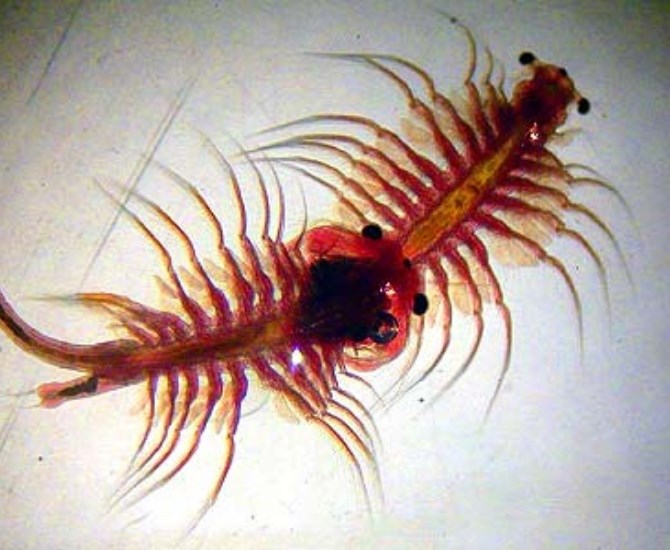
The brine shrimp are adapted to survive in highly saline environments, and will turn bright red due to an increased amount of hemoglobin in their blood.
Image Credit: SUBMITTED / Louis Gosselin
“When you get hundreds of thousands of them in the bottom of a pond, the whole bottom looks blood red,” he said.
The Salicornia plant, otherwise known as pickleweed, thrives in the salty environment on the edge of these ponds. While you may not notice them in the summer, they turn from green to bright red in the early fall.
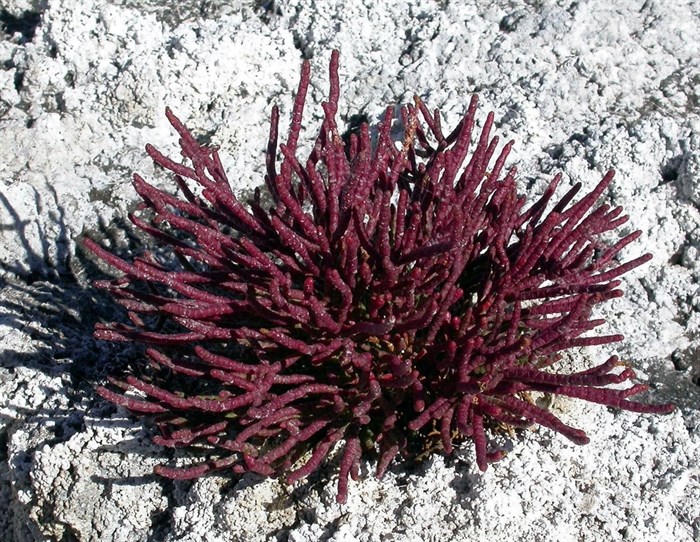
Salicornia plant, also called pickleweed, growing on the shoreline of a pond in Lac du Bois Grasslands Protected Area. In the fall, the plants turn bright red.
Image Credit: SUBMITTED / Louis Gosselin
There are several factors threatening the ponds, one of which is climate change.
If the winters are warmer, and there is less snowmelt, there will be less water available to fill the ponds each year.
More imminent danger for these habitats is human destruction.
Unlike some coastal environments, the Lac du Bois grasslands are quite fragile and can take years to recover from damage.
"There's places where people used to go with their cars, have a fire," Gosselin said. "I don't think anyone's been there in eight to ten years, but you can see exactly where they were, the ruts in the ground. It doesn't recover very quickly."
The issue is that it doesn't take many people to cause long-term damage in the area.
Gosselin once witnessed someone riding an ATV through an empty pond. While it may appear to be an empty dirt patch, the pond will eventually rehydrate. Activities that tear up the clay bed will prevent the pond from ever filling again.
The provincial government and the Nature Conservancy of Canada each own portions of the park, and limit destructive activities in order to preserve the fragile ecosystems in the grasslands. However, the public is welcome to visit the park and frequent the many hiking trails in the area.
To contact a reporter for this story, email Brie Welton or call (250) 819-3723 or email the editor. You can also submit photos, videos or news tips to the newsroom and be entered to win a monthly prize draw.
We welcome your comments and opinions on our stories but play nice. We won't censor or delete comments unless they contain off-topic statements or links, unnecessary vulgarity, false facts, spam or obviously fake profiles. If you have any concerns about what you see in comments, email the editor in the link above.
News from © iNFOnews, 2021